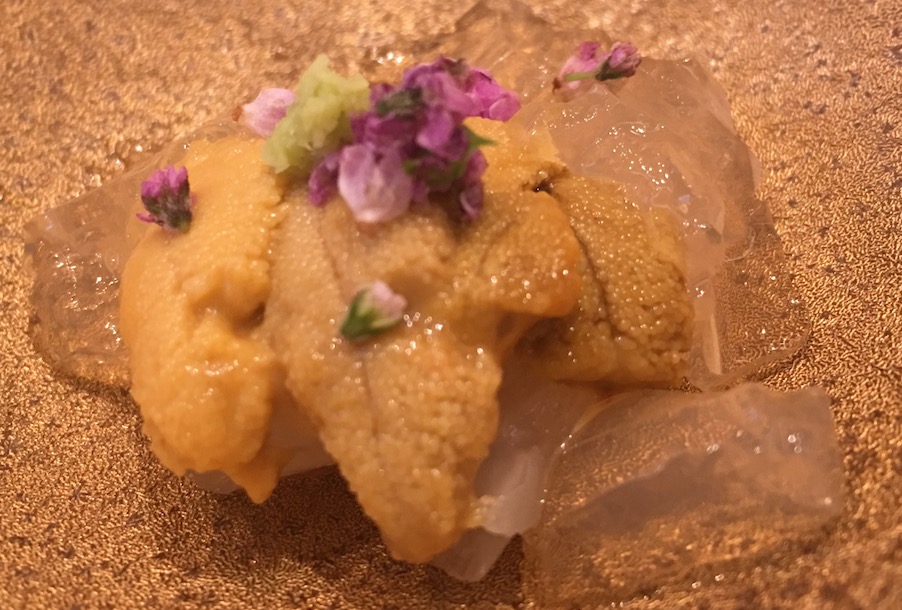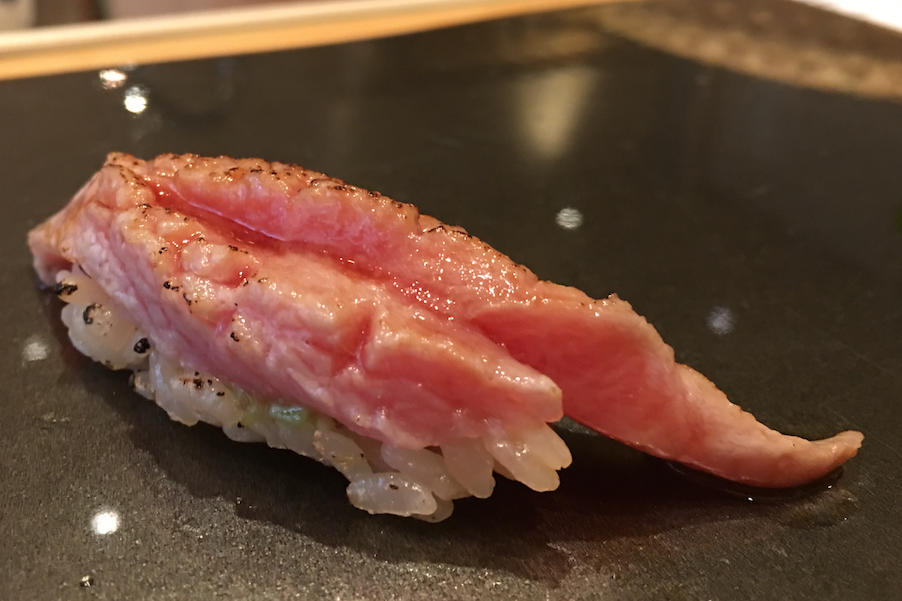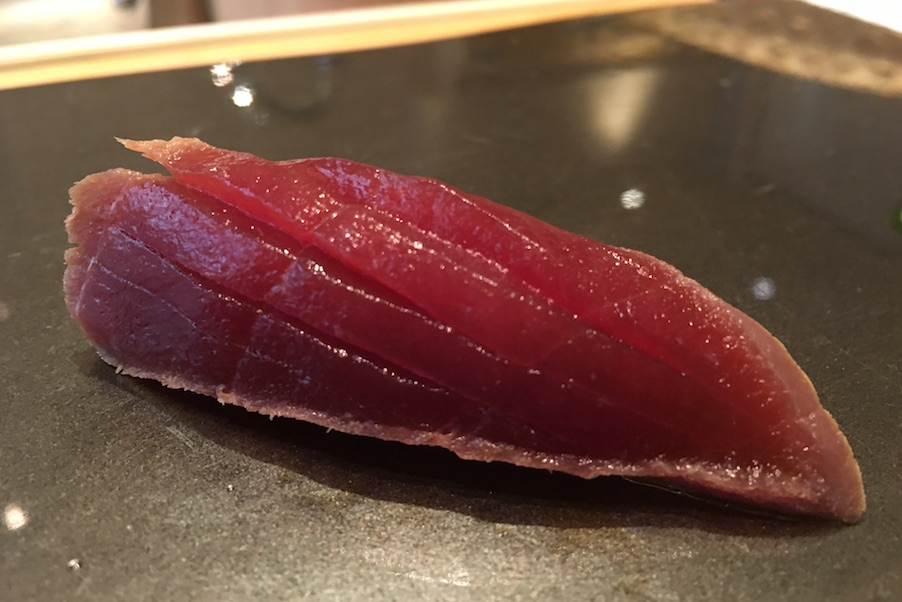I lived in Japan for three years and travel to Tokyo 50 days a year on average. Suffice it to say, I am picky when it comes to Japanese food. In Hong Kong, a lot of it is bad, overpriced, too glam or all of the above. When assessing sushi, one is judging against a standard of excellence that has been set over generations and from which there is usually nowhere to go but down.
That is why it is so hard for restaurants outside of Japan to come even close to sushi in its originating country, which through the forces of history, market share and an appreciation of quality, naturally has the world’s freshest fish, best sushi chefs and most dignified ambiances.
But then there is Sushi Imamura, which is located in the Macau Yat Yuen Centre, not far from Sogo. The building basically consists of 26 floors of Japanese restaurants, but I would suggest you go directly to level 16. When you exit the lift, immediately in front of you is the slatted wooden door to Sushi Imamura, with a few chairs on the left for those unfortunate diners who have not made a reservation. The sign above lets you know that you are at a “Japanese Sushi Restaurant” – and not just any old place for sushi.
For this lunch, I was immediately struck by the bright and tasteful renovation that had been completed since my last visit. The restaurant is small with a 12-seat sushi bar to the right and a handful of tables to the left.
The sushi bar
The menu at the counter consists of a limited number of sets, both at lunch and dinner. My guest and I ordered the omakase (chef’s choice) sashimi and sushi set (HKD600). It includes seven types each of sashimi and sushi, one roll, an egg custard, miso soup and a small dessert. For an additional HKD400, several hot food items can also be served but Sushi Imamura is a place to get raw fish and I would stick to that.
The meal started with a small portion of ochazuke as an amuse bouche. Ochazuke is a savoury dish made by pouring hot green tea over cooked rice, with flavourings such as seaweed and green onion. I am used to ochazuke as a conclusion to a Japanese set meal in lieu of white rice or noodles, but this small portion worked well as a warm beginning to the fresh fish to follow.
Sea whelk sashimi
At first, I was a bit apprehensive when the sashimi began to arrive as the garoupa had an ever so slightly too pungent fishy taste. That concern quickly abated as six delicious pieces of raw seafood were presented one by one. The sea whelk had a perfectly crunchy texture, while the surf clam was softer and delicious, dabbed with bits of freshly grated wasabi.
The highlight of the sashimi course, however, was the sea urchin (uni) and lobster sashimi with agar jelly. The strong, distinctive flavour of the uni, imported from Japan, was perfectly complemented by the cold jelly and the soft, subtle lobster.

Uni and lobster sashimi with agar jelly
Before the sushi course, a smooth egg custard filled with cooked lobster – cooked exactly the way it should be – was served. There was also no disappointment among each of the seven pieces of sushi.
A highlight was the soy-marinated tuna known as magurozuke. This sushi is a preparation of red tuna aged in soy sauce that was originally developed in an era before refrigeration, with the soy sauce preserving the fish. Today, it produces a subtly salty flavour that emanates deep from within the tuna – quite distinctive from dipping a piece of soggy fish into tepid soy sauce at a local conveyor belt.
The sea urchin, salmon egg and freshwater eel sushi were also all of a quality that would be acceptable in Japan. A stand-out was the braised fatty tuna sushi, on which the torched fat was glistening and practically dripping before it could melt in your mouth.

Braised fatty tuna sushi
The meal concludes with an excellent minced fatty tuna and leek roll as well as a traditional fish miso soup, followed by a choice of dessert. Both the creamy black sesame ice cream and the green tea pudding, almost like a panna cotta, were pleasantly sweet treats to conclude a decadent weekday lunch.
In the end, what distinguishes Sushi Imamura from other Hong Kong sushi restaurants is its exercise of restraint. Ninety kinds of whisky aren’t available; you aren’t welcomed with a chorus of poorly pronounced Japanese greetings and you won’t be able to find twenty kinds of rolls featuring spicy sauces and/or cream cheese. Rather, it is one of only a handful of restaurants in Hong Kong that can rightfully claim to deliver sushi like that you would get in Japan. And for that, I commend it.
Sushi Imamura: 525 Hennessey Road, Causeway Bay (Google Maps)
About the Hungry Lawyer: Marc Rubinstein, born in Baltimore, USA, has been in Asia for nearly 20 years with 13 of those in Hong Kong. He has split his career between banks and law firms, and is currently the general counsel of an Asia-based real estate and alternative energy investor. Marc is a co-founder and co-chair of the Hong Kong Gay & Lesbian Attorneys Network, and previously chaired the Nomura Gay & Lesbian Network, Asia. In addition to being a hungry lawyer, he has run three marathons, eight half-marathons and completed the Hong Kong Oxfam Trailwalker.
Other columns from the Hungry Lawyer:
Hungry Lawyer: My favourite French bistro, Les Fils à Maman
Hungry Lawyer: Chicken on a Pole at Kowloon’s Tai Chung Wah
Hungry Lawyer: Man Wah, an elegant alternative for dim sum at the Mandarin Oriental
Hungry Lawyer: Beefbar, a Monte Carlo meatery that does beef right
Hungry Lawyer: La Cantoche, a hipster bistro in Sheung Wan that needs to up its game
Hungry Lawyer: Indian Village, a hole-in-the-wall in the heart of Mid-Levels
Hungry Lawyer: Bashu Garden, a Sichuan gem in a quiet part of Sai Ying Pun
Got a tip? Send it to us at hongkong@coconuts.co




